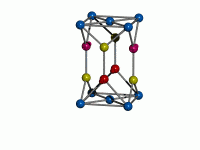Crystalline 'antiferromagnet' has potential for improved digital memory
Smaller, faster, and more robust and energy efficient electronic devices could be developed, thanks to research into an entirely new form of digital memory.
The new form of memory, known as antiferromagnetic spintronics, was recently unveiled in the journal Science, by an international team of researchers lead by Dr Peter Wadley at Nottingham University, and funded by EPSRC and the EU.
Antiferromagnets have a theoretical switching speed limit that is roughly 1000 times faster than the best existing memory devices, Wadley said.

What’s more, they do not produce stray magnetic fields, meaning they can be packed more closely together to produce a memory device with a higher storage density. This also prevents data stored on the devices from being stolen by magnetic scanners.
Finally, unlike ferromagnets or solid state memory, antiferromagnets are not sensitive to external magnetic fields or radiation, meaning they do not need to be shielded from certain equipment to prevent the data being erased. This makes them suitable for use in harsh environments such as on satellites and aircraft, or for some military applications.
Register now to continue reading
Thanks for visiting The Engineer. You’ve now reached your monthly limit of news stories. Register for free to unlock unlimited access to all of our news coverage, as well as premium content including opinion, in-depth features and special reports.
Benefits of registering
-
In-depth insights and coverage of key emerging trends
-
Unrestricted access to special reports throughout the year
-
Daily technology news delivered straight to your inbox










National Gas receives funding to develop Gravitricity underground hydrogen storage system
One single rock salt mine - Winsford - has 23 <i>MILLION </i>cubic metres of void and even allowing for 10% of that void set aside for hazardous waste...